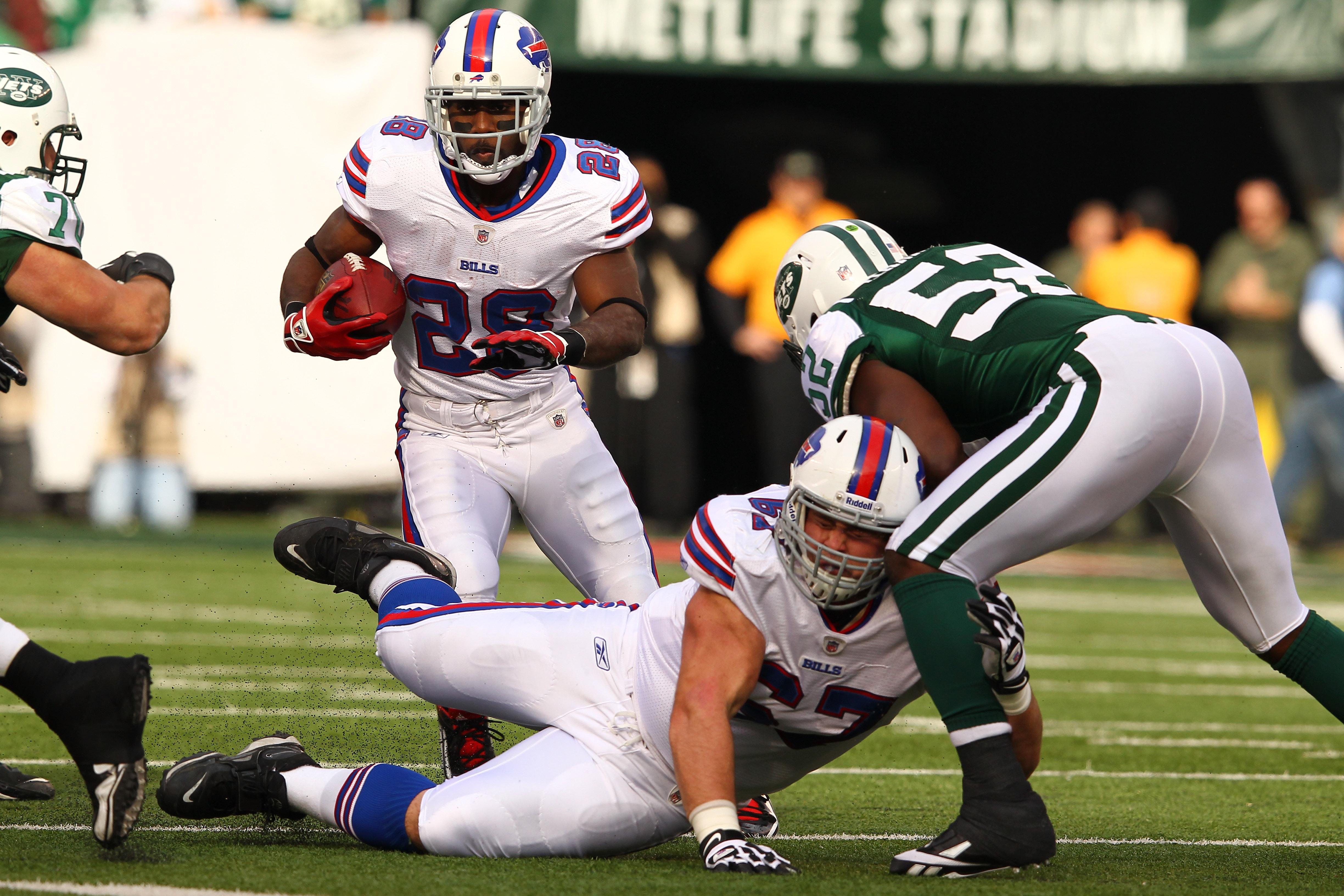It sounds as if the Giants defensive line is pissed off mainly about cut blocks. The after-the-whistle stuff will get called by the refs. But cut blocking, also called chop blocking, is an age-old conflict between offensive linemen who see it as a legitimate run-blocking tactic and defensive linemen who see at as cheap and unnecessary. But you never hear anyone complaining about a dirty offensive line for a crappy team. The Falcons should take it as a compliment.
When I played for the Broncos, our offensive linemen got a bad rap too. People called them dirty and complained about their tactics. Defensive linemen hate being cut blocked. Everyone hates being cut blocked. There you are, trying to fire off the ball and engage your upper body with the upper body of the dude across from you, and then he dives at your kneecaps. Actually, not at your kneecaps—through them. And it has to be done aggressively and with no hesitation or concern that you might be hurting him or his feelings. But this technique rarely results in torn ACLs or broken legs because everyone is in explosive motion. It’s when you’re caught standing still with your feet planted that something snaps that shouldn’t snap.
Dominant pass rushers hate being cut the most, because it sticks a knife in their plans to get up the field after the quarterback. That’s why Justin Tuck is talking about it. Osi Umenyiora probably hates it too. So they’ll all be talking shit to each other during the game. “Stay off my fucking knees, motherfucker!” But that certainly won’t stop the Falcons O-line now. Not when you have verbal confirmation from your opponents that it’s bothering them.
Getting cut slows you down for the rest of the game. You start protecting your lower body from attacks, and that slight hesitation is all an offensive line needs to get some leverage over the defensive front.
Of course, cut blocking can go very wrong for an O-line. Whiff on the cut, and there you are, lying on the ground, looking silly and possibly tripping up a teammate who’s engaged with his man and who didn’t get the memo you were going to cut. You also leave yourself vulnerable to a kick or a knee or a forearm shiver from the lineman you tried to chop but who jumped out of the way and is now standing over you, fuming. If the play is going the other way, be prepared for some retribution and a few sharp words about your mother. Also, if you whiff, don’t do a barrel roll. That’ll break someone’s ankle and really give you the dirty label. I saw that happen when we played in Jacksonville years ago. There were a lot of unhappy men on the other sideline as their defensive leader, Paul Spicer, was carted off with a fractured leg on an unnecessary backside barrel-roll cut.
The backside of a run play is when the cut block is used most. Frontside blocking needs bodies squared up and off the ground so there isn’t a pile-up in the hole. A pile-up in the hole means the running back has nowhere to go. And that’s why defensive linemen think cut blocking is so dirty—it’s happening away from the central action of the play. But a fast and savvy defensive lineman pursues the run from the backside, hard down the line of scrimmage, putting himself in position to shitstain a running back when he makes a backside cut. Zone running plays have multiple holes a running back can choose. He sizes up his lanes, makes one cut, and explodes downhill through one of the lanes. The choice lane is often off the hip of the center or a backside lineman. The fewer pursuing defensive linemen, the better.
When I was a receiver in 2004, our receivers coach wanted us cutting defensive backs down the field on run plays to send them a message. I hated cutting. It wasn’t good gamesmanship, in my mind, and I wasn’t a natural in-the-trenches guy. I felt like a punk even trying it. I almost imagined myself whimpering as I shot out of my stance and aimed for another man’s patella. Also, I would’ve hated it if someone had done it to me. But that wasn’t the main deterrent. Empathy dies a silent death in the NFL. You do what you have to do to get the job done. For the most part, offensive linemen are fine with cut blocking because they know that sometimes it’s necessary. They’ll do whatever they have to do. O-linemen are notoriously content with that aspect of the game. Call me dirty? Fuck you. I don’t care. I did my job. You don’t put yourself in another man’s shoes. You don’t try to feel his pain. Your own pain is enough.
Clarification, Jan. 6: The story uses “cut blocking” and “chop blocking” interchangeably, though there is a technical difference, as this story explains:
There is a gray area between the legal cut block and the illegal chop block. The cut block occurs when a player (usually an offensive lineman) blocks another (usually a defensive lineman) below the knees with his helmet in front of the player. The chop block occurs when the same block comes from the side or the back, or when the defensive player is engaged with another offensive player and therefore defenseless.
